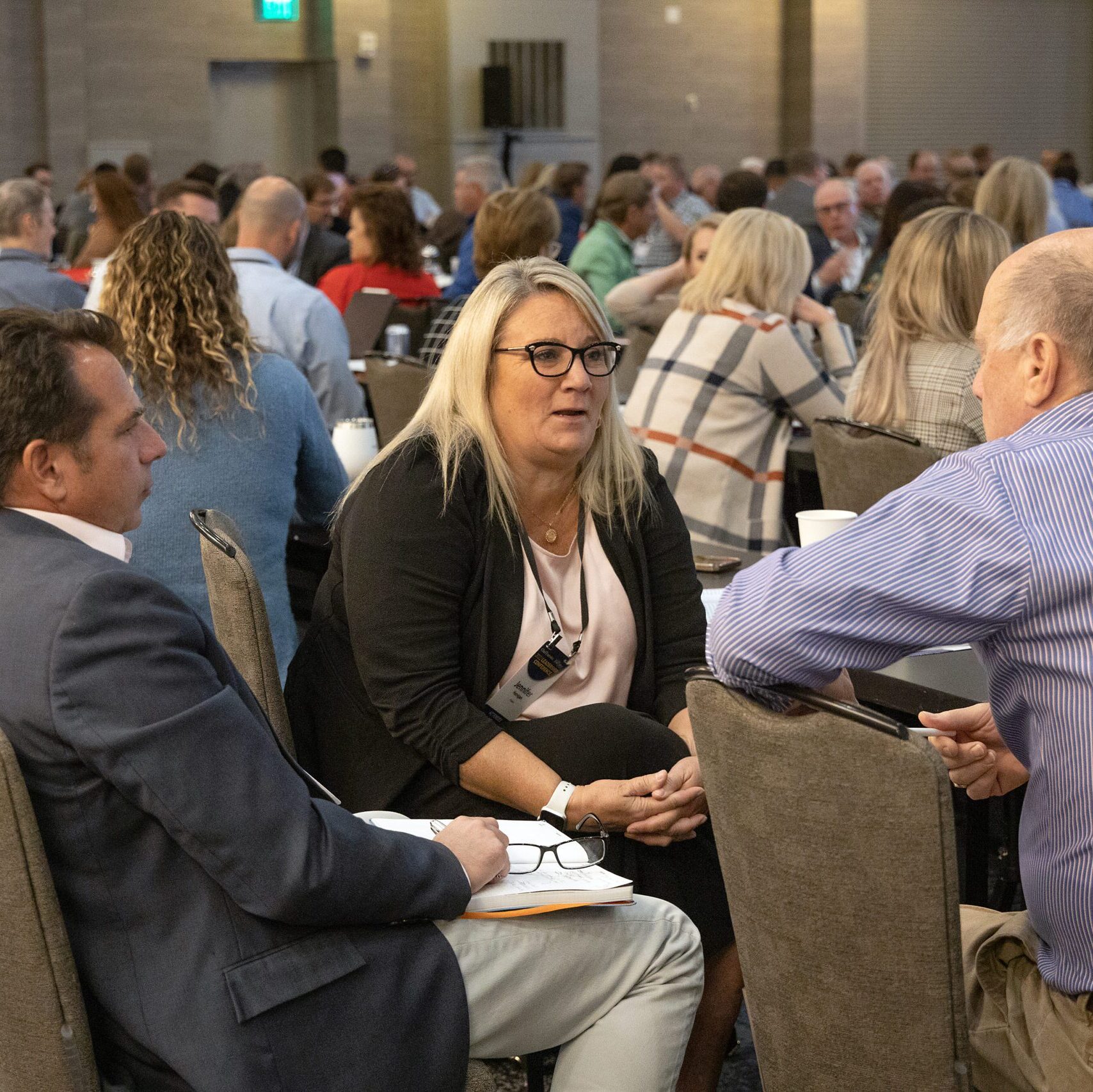 Critical thinking and decision making skills frequently rank as the top attributes companies believe effective leaders should possess. And researchers at Bain & Company have found that decision effectiveness is 95 percent correlated with financial performance.
Critical thinking and decision making skills frequently rank as the top attributes companies believe effective leaders should possess. And researchers at Bain & Company have found that decision effectiveness is 95 percent correlated with financial performance.
At the same time, a study of 500 managers and executives concluded that 98 percent of business leaders fail to apply best practices when making decisions. The problem stems from a fundamental leadership trap: a deadly cycle of overconfidence fueled by a leader’s limited mindset and confirmation bias.
Thankfully, there are three small actions every leader can take to help them escape this trap.
Most of us have encountered this famous image, popularized by british cartoonist William Ely, before. It’s sketch of an old woman with a large nose, wearing a headscarf. Or is it a young woman with a delicate chin, wearing a fancy hat? Both answers are correct. The image is a popular optical illusion created more than a century ago.
But even those who are well aware of the illustration’s trick tend to see the image one way or the other. Our perspectives are often stubbornly fixed, informed by our individual, differentiated experiences. We rarely realize just how set in our ways we are. Too often, leaders either ignore the past or they ignore current trends; both actions are mistakes that limit a leader’s ability to make good decisions. Whenever a decision comes to their desk, leaders should ask themselves, “how would someone else see this issue differently?”
This should not be a vague thought experiment. Leaders must get specific. How would real stakeholders involved in this decision — from colleagues, to employees, to customers — define this problem differently?
When Amazon was first created as an online bookstore in the mid 1990s, traditional book sellers doubted the website could be successful. After all, stores like Barnes & Noble had only recently disrupted the market and redefined the image of a successful bookstore. Barnes & Noble and other big chains were designed as places where customers could take their time exploring titles, even sitting in armchairs to read books before they bought them.
This, clearly, was an experience Amazon could not replicate, and book sellers never anticipated how successful Amazon could be without those offerings. They were, of course, wrong. Amazon is now the most valuable public company in the world.
Today’s bookselling entrepreneurs would be wise to recall the mistakes made by bookstore chains of yesteryear, and they should assume they would make a similar kind of error. Conventional wisdom might say that Amazon is here to stay, but even its founder, Jeff Bezos, has predicted that, “one day, Amazon will fail.” Savvy leaders should explore why, exactly, leaders made a wrong choice in the past, and remember they can just as easily be on the wrong path, too. We will not learn from others’ mistakes if we continue to assume we would never have made the same mistakes.
Trends are solid—until they are not.
How often do leaders ask themselves if they are using the right data to make their decisions? When leaders are making a decision, they often receive large amounts of data to help them make whatever determination is necessary. Combing through that data seems like the best way to make an informed choice, but, in reality, that data can be a trap.
If the answer was in the easily available data, chances are another company would have already found it. Throughout our educational lives, we are trained to find the answer in the data that we receive. It is, afterall, how we solve math problems. But not all problems are math. Leaders should, instead, determine what important questions they need to ask before they ever seek out the data that could help make their decision.
When most people approach a decision with a hypothesis already in place, their natural instinct is to be right about that gut feeling. They want to “win,” and humans have an amazing ability to discount data that does not support what they want it to. Making better decisions requires leaders to embrace being wrong.
Read more: The CEO’s Role In Building A Great Leadership Team
Chief Executive Group exists to improve the performance of U.S. CEOs, senior executives and public-company directors, helping you grow your companies, build your communities and strengthen society. Learn more at chiefexecutivegroup.com.
0

1:00 - 5:00 pm
Over 70% of Executives Surveyed Agree: Many Strategic Planning Efforts Lack Systematic Approach Tips for Enhancing Your Strategic Planning Process
Executives expressed frustration with their current strategic planning process. Issues include:
Steve Rutan and Denise Harrison have put together an afternoon workshop that will provide the tools you need to address these concerns. They have worked with hundreds of executives to develop a systematic approach that will enable your team to make better decisions during strategic planning. Steve and Denise will walk you through exercises for prioritizing your lists and steps that will reset and reinvigorate your process. This will be a hands-on workshop that will enable you to think about your business as you use the tools that are being presented. If you are ready for a Strategic Planning tune-up, select this workshop in your registration form. The additional fee of $695 will be added to your total.

2:00 - 5:00 pm
Female leaders face the same issues all leaders do, but they often face additional challenges too. In this peer session, we will facilitate a discussion of best practices and how to overcome common barriers to help women leaders be more effective within and outside their organizations.
Limited space available.

10:30 - 5:00 pm
General’s Retreat at Hermitage Golf Course
Sponsored by UBS
General’s Retreat, built in 1986 with architect Gary Roger Baird, has been voted the “Best Golf Course in Nashville” and is a “must play” when visiting the Nashville, Tennessee area. With the beautiful setting along the Cumberland River, golfers of all capabilities will thoroughly enjoy the golf, scenery and hospitality.
The golf outing fee includes transportation to and from the hotel, greens/cart fees, use of practice facilities, and boxed lunch. The bus will leave the hotel at 10:30 am for a noon shotgun start and return to the hotel after the cocktail reception following the completion of the round.